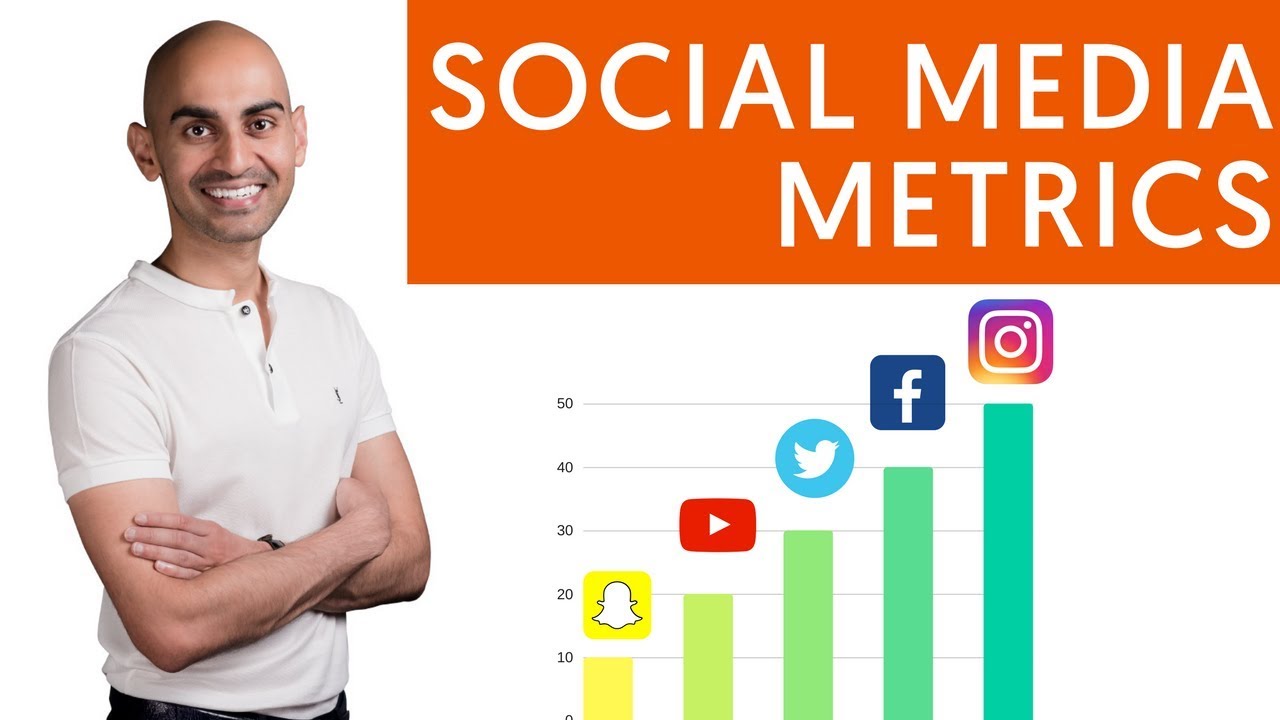PR KPIare ways to measure how well a public relations employee, manager, or team is doing at putting a successful public relations strategy into action over time. For an organization to grow and mature over time, it needs a strong and effective public relations department and system.
Everyone needs a goal to keep them on the right path. Key performance indicators (KPIs) are a great way to make goals more real and measure things that couldn't be measured before. When you (or your boss) want to know if you're doing a good job, KPIs can tell you and push you to do even better.
It's one thing to do everything you can to promote your brand and spread your message. It's another thing entirely to turn this activity into data that businessleaders can understand and value.
If your reporting only looks at brand mentions and social validation (which are called "vanity metrics"), owned, earned, and paid media are likely to be seen as "nice to haves" instead of important growth drivers for your business.
What Is PR KPI?
With the need for Public Relations comes the need to measure the effect of this new type of marketing strategy, and traditional ways of comparing Cross-Voice and Cross-Channel methods just don't work as well anymore.
Understanding your return on investment (ROI) and how successful your current marketing strategies are compared to those of your competitors can help you decide how tospend your moneyand what strategy to use in the future.
It's not enough to just do PR activities; you also need to set PR KPIs that reflect your business goals and use reliable PR metrics to track how well your PR is working. If you don't, you won't know if what you're doing is working or not. Or what isn't working.
Key performance indicators (KPIs) are used to measure goals that can't be measured in numbers. This makes the goals more real. Also, they encourage people to try to reach higher heights.
What Is PR Measurement?
PR results have been hard to measure for a long time. PR is different from advertising in that it doesn't always have a direct link to sales. Most advertising campaigns have clear goals built into them, as well as analytics that you can look at to see how things are going. But of course, many marketing and communication strategies, such as public relations, don't have software built in.
Public relations is all about building and keeping a good reputation for a brand and getting to know people. This is very different from a Facebook ad campaign that runs for a set amount of time and has clear rules.
Still, PR isn't impossible to measure, even though it can be hard. You can get the most out of your campaigns if you set clear goals and keep track of how well they are doing. With this method, you'll have a much clearer idea of what's working and what's not, which will help you decide if you should keep doing what you're doing or try something else.
What Is The Significance Of PR KPIs?

What is KPI and why measuring KPI (key performance indicators) is important
A key performance indicator, or KPI, is a value or statistic that companies use to determine what aspects of their operations are successful and which ones are not. There is no exception made for public relations firms. They will be able to adapt their strategy for dealing with the media in order to keep moving forward in the right direction if they do this.
Public relations experts use the so-called "free media" to promote individuals and businesses. One of the goals of public relations agencies is to have their clients' work featured in editorials and pieces in print publications like magazines and newspapers.
They also keep an eye on the conduct of the general public and how it affects the clients' activities. In addition to that, they take care of the responsibilities that their customers have for the general public.
How can one determine whether or not these objectives have been met? The answer is in having an awareness of key performance indicators for public relations.
What Are PR KPIs Used For?
Key performance indicators (KPIs) help teams and companies reach their goals by giving them a way to measure their performance over time in relation to a specific PR goal. KPIs are also a great way for your team to figure out what is working and what isn't. This helps you improve future media campaigns and make better use of your resources, especially when more than one person is working on PR.
Lastly, KPIs are a great way to show executives and other important people how valuable your team is by setting goals that can be measured and seen. Explaining that you raised brand awareness by a certain percentage is much more powerful than, say, saying that you ran two campaigns to raise brand awareness.
Picking Your PR KPIs
Before you do anything else, you need to know what your PR goalsare. You don't want to waste time or creative energy on PR campaigns that can't be measured or don't get you where you want to be.
Follow the SMART plan. Make sure your goals are Specific, Measurable, Attainable, Relevant, and Timely. Next, use the customer journey funnel to figure out which part of the customer's journey you want to focus your campaign on.
You'll want to talk to people at the following stages of the journey: awareness, knowledge, interest, preference, and action. Once you've decided on your goals, you'll know better what metrics to use.
Metrics are specific to each industry and change based on your campaign and goals. In my PR company, we would keep track of how many hours we spent on pitches and how well they did in the media as a whole.
We kept track of how long it took to find a reporter who was interested in our story. This method helps you figure out how much time you're putting into each opportunity and gives you an idea of how well they're working for you.
We also had to figure out how much PR value each media mention had for our clients. We started looking at how many people these stories brought to their website, how much of an SEOboost we were likely to get, how many people would see the article, and how many new customers we were getting.
Essential PR KPIs To Measure

KPIs to Calculate the ROI of Your PR Efforts
Number Of Impressions
Even though this isn't an exact science, it's nonetheless important to keep track of as a key performance indicator (KPI) because the amount of possible impressions gives the coverage some perspective.
Coverage from news websites and publications that have a higher number of potential impressions tends to carry more weight, particularly when it comes to reaching a key demographic or target audience.
This is true regardless of whether the circulation numbers or the number of unique visitors per month (UVPM) are being considered.
Keep in mind that the coverage provided by a single big media organization can frequently be matched by many pieces of the material provided by a number of smaller publications.
The objective is to disseminate information as frequently as possible to the appropriate people in the locations where such people look for news and information.
Website Traffic And Referrals
The ability to align and measure efforts across the board is one of the primary benefits that come from having marketing and public relations (PR) activities work together hand in hand.
It is more important than it has ever been for public relations professionals to ask for backlinkswhenever they have the opportunity to do so since insights supplied by Google Analytics, for instance, can shed light on where incoming website traffic is originating from.
You only need to go to the "Acquisition" tab and check the Referral traffic to learn where people are coming from when they visit your website. This information can be found by clicking on the "Acquisition" button.
Marketers and public relations professionals can find out what is driving website traffic through the use of analytics, which makes it simpler to identify PR "wins" and attribute traffic to conversions.
Note that the use of a hyperlink to connect one website to another is known as a backlink. Your search rankings will improve over time if you are able to acquire a greater number of backlinks (links that lead to your website from other websites). You may learn more about increasing your SEOand constructing backlinks here.
Social Media Engagement

Is Your Social Media Marketing Working? Here's How to Track Your Social Media Efforts
Even the news is written and distributed with the intention of increasing both awareness (of an issue, person, or company, etc.) and engagement with that issue, person, or firm.
A very tangible key performance indicator (KPI) that public relations professionals can zero in on and measure week over week or month over month is the brand's social engagement. It is relatively simple in today's world to keep track of the activities you engage in on social media.
You can even take things a step further and monitor not only the number of impressions made in the newsfeed, but also the interactions that are linked to the coverage, such as likes, shares, and comments.
Sentiment Analysis
Whoever declared that "any press is good press" had never dealt with a real crisis in their life. There is such a thing as negative news, but there is also neutral press and positive press, all of which can contribute to the development of positive brand emotion for any organization, regardless of its size or sector.
It should come as no surprise that the more favorable and unbiased publicity there is, the better. Every media coverage report should also include a sentiment analysis, which is something that can be determined by artificial intelligence but should, in every case, be confirmed by the PR professional who is responsible for the mention or coverage.
Share Of Voice
The share of voice compares businesses against their rivals, analyzing everything from the number of potential impressions and the reputation of media outletsto sentiment and even the prominence of the brand in coverage. This metric is likely one of the most interesting KPIs to keep an eye on.
Setting up alerts to keep track of the competition in the news is a fantastic approach to get started learning about the landscape of the media industry. Take into consideration the following reportable and actionable pieces of data:
- Is it from a trusted and reliable media source?
- What is the size of the media outlet’s audience?
- Is the brand sentiment positive, neutral or negative?
- Does it link back to the competition’s website?
When it comes to holding "media share," public relations professionals can tell at a glance whether or not they are winning or losing by evaluating the questions that have been presented above.
As a result of monitoring this key performance indicator (KPI), you will be able to compile a fresh list of prospective media contacts to get in touch with because of their recent work with organizations that are analogous to or in direct competition with your own.
Media Mentions
It's the most basic KPI for public relations and a key one that ties the rest together. When a brand's message, name, or campaign is talked about on TV or popular online platforms, this is called a "media mention."
Most of the time, social media mentions are not included in media mentions. The second one is more important because it comes from well-known publications, sources, and other trusted channels.
But PR pros might look at social mentions when figuring out how well their campaign did since their audience might not follow their official channels. There are many tools, like Reddit Keyword Monitor and Hootsuite, that can be used to measure this PR KPI.
Media Reach
Before there was online marketing, newspapers, magazines, and other periodicals were used to spread content. This is a matter of public Social media, websites, and other online platforms are now part of KPI. The reach of a company is the number of people who saw the content through free or paid media.
Paid reach is the number of possible customers or audience members who are reached by ads. Only ads are used to promote these paid posts. Organic reach is the number of users who see your content because you shared it for free. This includes views of both the page and the profile. The total reach is made up of both paid and organic reach, and both are important for a company's PR plan.
People Also Ask
What Is The Measure Of PR?
PR measurement is the process of figuring out how effective one or more PR activities were. PR metrics are used to measure how well PR is doing and to figure out how well a marketing campaign is doing.
How Do You Measure The Success Of PR?
You can figure out how successful a PR campaign was by looking at how many new followers you got and how many people your average monthly post reached. After a campaign on social media, the number of likes, retweets, and shares can be used to measure how engaged people are.
What Is A Successful PR Campaign?
PR, or public relations, is a strategic process that helps a company or brand build good relationships with its audience. A PR campaign is a planned set of activities meant to improve the reputation of a brand. It involves getting the target audience involved and talking to them in order to reach a certain goal.
Conclusion
PR KPI is a great way to figure out how well a business campaign is doing. Every company, no matter how big or small should think about using the marketing metricslisted above to get the results they want.
That being said, these metrics, of course, even with virtual events, should also be compared to those of the competition to see where performance may be lacking. Public relations can be a real asset to any business, no matter how big or small it is or what it sells.
PR is often slow to start, but over time it can grow into a bonfire. With the right mix of metrics, you can watch the needle slowly move toward an explosion of brand success.
